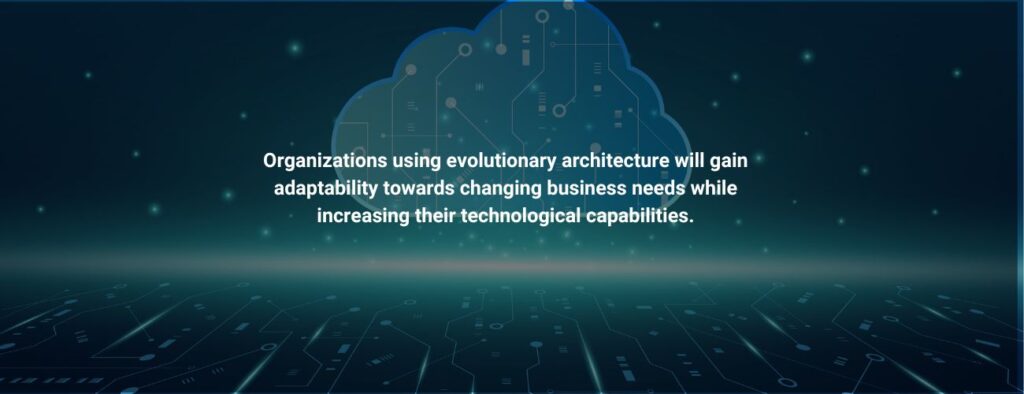There is a lot of conversation about evolutionary architecture, microservices, and data mesh and their benefits. But rarely are their cohesive benefits highlighted. Before finding common ground between these three, it is important to understand what each term exactly means.
Evolutionary architecture is an approach to building software that is designed to evolve as new technology emerges, customer demand shifts, and business priorities change. Microservices is another architectural style that builds software through small independent services communicated over well-defined APIs.
The data mesh is a modern and decentralized architecture model that organizes data by a specific business domain, but also enables cross-domain analysis by members of one team. These three architectural designs together can support an incremental process of change that is both robust and flexible.
Need of Evolutionary architecture
With ever-increasing customer demands, business needs, and technological changes, organizations began to adopt evolutionary architecture. According to our discovery, business needs are continuously expanding with IT capabilities. So, to transform organizations with a data-centric approach, evolutionary architectures could scale the applications effectively. This is possible by adapting to business, technological, and customer changes.
Modernizing applications in organizations with microservices
The earlier models of data architecture were monolithic and inflexible. Over the years, countless organizations have transformed such systems into microservices-based architecture intending to modernize their software and data.
Such transformation is achieved through a distributed systems model. In this model, chunks of independent services communicate over robust APIs to work together and achieve successful business outcomes.
Committing to this modernization, follows the roadmap of evolutionary architecture. It directs organizations to follow an iterative approach based on guided incremental changes across multiple dimensions.

Modernization of centralized data platform with data mesh
Data mesh as an architectural design is significant in today’s design systems as it is a decentralized approach to data architecture. The basis of this design is an analytical data architecture and operating model where any data is treated as a product of the organization. This data is owned by the team that closely handles such data.
The evolutionary architecture approach can monitor this gradual modernization of applications as it is also suitable in a data-driven context.
Differences and similarities with Microservices
As the data mesh is based on governance through decentralization, and aims to follow a distributed systems model, the approach of transformation is like microservices. Whatever microservices have done to monolithic systems, the same is expected of data mesh to do for data warehousing.
Data mesh can identify distinct and independent domains based on how data needs to be transformed, governed, and served, in the same way, microservices do. A lot of the analytical data products evolve from operational system microservices. Hence, shifting to the data mesh architectural model becomes the most obvious way of modernizing.
The right play: Could data mesh scale your evolutionary architecture?
Data mesh is a part of many constructive conversations regarding the future of data architecture. Using an evolutionary architecture approach, data mesh can be smoothly integrated into the product design.
However, you must keep in mind that data mesh is a relatively new approach to data architecture, that entails a new way of managing, governing, and operating data. It’s a complex approach if data mesh must solve all data-related challenges. This approach requires a long-term commitment with discipline before it can be scaled. Coordination is essential to ensure that there is a balance of federation and governance that properly aligns, enables, and supports data teams.
Thus, converting an application system built on microservices to one that adopts data mesh is a change that propels success for organizations.
Modernization from microservices-based architecture to a data mesh-based decentralized architecture can smoothly happen with evolutionary architecture. Given enough time, data mesh can solve many data-related troubles that older architecture systems could not solve.


